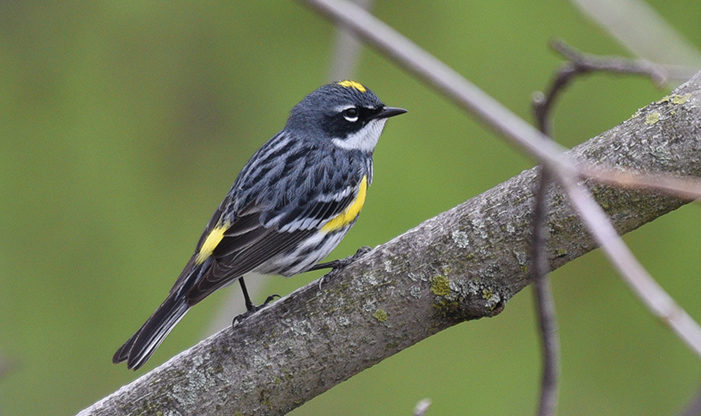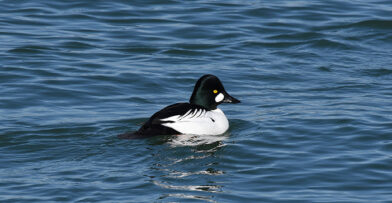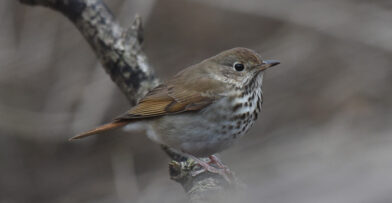We have a new feature on our blog! Each month we will be running a bird profile where we highlight a species that is either migrating through, or a year-round resident of Wisconsin that can be found at Schlitz Audubon or in your backyard. With spring migration ramping up, we chose the Yellow-rumped Warbler as our first Bird Profile.
NAME
Yellow-rumped Warbler, Setophaga coronata
Also known as: Butter-butt
BASIC APPEARANCE & DESCRIPTION
The Yellow-rumped Warbler is a common species within the warbler family and is a neotropical migrant. They are considered to be one of the larger warblers, but are still a relatively small bird with a length of around 5.5 inches.
A distinct marking on the Yellow-rumped Warbler is a bright yellow pat on their rump, which is how they got their name. Males have a bright golden-yellow crown and the same color of markings on their sides, as well as a black mask, and a blue-gray appearance overall. Females have similar markings as males but are slightly less bright overall, and may appear more brown.
song
Their song can be tricky to commit to memory at first because it is a warbly trill and doesn’t have an easy mnemonic to remember. They can also be identified by their distinct “chek” call note.
Habitat & Nesting
Yellow-rumped Warblers can be found in a variety of habitats during migration, including urban canopies and a mix of coniferous and deciduous forests. During breeding season, they choose coniferous trees for their nest building. Their breeding range extends from much of the northern U.S. including northern Wisconsin, into Canada.
DIET & FORAGING
During migration and breeding, they mainly eat insects, but can also eat different fruits and berries. They have the unique ability to digest bayberries and wax myrtle which allows them to winter further north in the US than other warbler species.
WHEN & where to find at schlitz audubon
Look for Yellow-rumped Warbler nearly anywhere on our trails from early April through the end of May, and then again in late August through September. Yellow-rumps can often be spotted from the Observation Tower, on the way to Mystery Lake, and on the Lake Michigan Trail high up in the tree tops.
other fun facts
- Until 1973, Yellow-rumps were considered two species. The Myrtle Warbler, which is the variety we mainly see in Wisconsin, and the Audubon’s Warbler, the Western counterpart.
- Yellow-rumped Warblers overwinter further north than other warbler species and have even been observed during Milwaukee Christmas Bird Counts.


